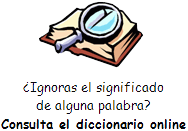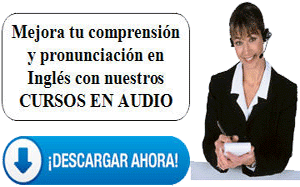 Many
languages shorten words in everyday speech. In English, we shorten a lot
of words. Many
languages shorten words in everyday speech. In English, we shorten a lot
of words.
One way we do this is with contractions: two words joined with a special
mark called an “apostrophe.” The apostrophe shows the reader where
letters have been removed. For example, the words “is” and “not” can be
combined to form the contraction “isn’t.” There is a letter missing
between the letters “n” and “t.”
Contractions are one of the most feared subjects for English learners.
They usually do not enjoy writing or reading them. Many are unsure how
to say them and often can't understand native English speakers when they
use them.
This fear probably comes from questions about them. Learners are unsure
of what the words mean, which letters were removed, how to spell them
and where to put the apostrophe.
Some English learners are even unsure whether contractions are correct
English. They hear them in films and songs and may think they are not
grammatical.
In this Everyday Grammar program, we’ll try to answer those questions. (You
may also remember an earlier program that shared some of the sounds of
contractions.)
When and why use them?
We use contractions in speaking, informal writing and even some kinds of
formal writing. They are, indeed, grammatical .
You might even see contractions in newspapers, such as The Washington
Post, or on television. Yet we do not use contractions in very formal
writing, such as in a college paper or a business letter.
Native speakers almost always speak with contractions unless they
purposely choose not to in order to emphasize something . Compare these
sentences:
I’m not tired.
I am not tired.
The first sentence seems to be a simple, factual statement. But if a
native speaker uses the second one, they are likely emphasizing they are
not tired. It makes a stronger statement.
Using contractions makes your English sound more natural, but English
learners are not required to use them.
Getting to know contractions
But, since contractions are so widely used, it’s a good idea to know
their mechanics. This will help reduce misunderstandings – and hopefully
fear.
Number 1: Most contractions are some form of noun + verb.
The first word in a contraction is usually a pronoun and the second is
usually an auxiliary verb. Contractions combine these parts of speech:
pronoun + verb (as in “he’ll” meaning “he will” and “she’d” meaning “she
would”)
noun + verb (as in “The book’s on the table”)
name + verb (as in “Anna’s going to a baseball game”)
verb + not (as in “aren’t” meaning “are not” and “shouldn’t” meaning
“should not”) and
question word + verb (as in “Where’s the beef?” and “What’s that?)
Notice that most of these involve some form of noun + verb.
We can also make contractions with the words “this,” “that,” “here” and
“there,” as in “This’ll only take a minute” and “There’s my phone!”
Number 2. Most verbs in contractions are auxiliary verbs.
You may recall from earlier programs that auxiliary verbs are helping
verbs. They help to give meaning or purpose to main verbs.
In the sentence “She’s leaving today,” the word “is” acts as an
auxiliary verb and is part of the present continuous verb tense. The
main verb is “leaving.”
Auxiliary verbs also include modal verbs (sometimes called “modal
auxiliaries”), such as “should,” “can,” “could,” “must,” “will” and “would.”
Number 3. The verbs “be” and “have” act as auxiliary verbs in some
contractions. In others, they act as main verbs.
In a statement like “She’s a teacher,” the word “is” in “She’s” is a
main verb. But, in “She’s leaving today,” the verb “is” is an auxiliary
verb and part of a verb tense.
Number 4. Affirmative contractions are never used at the end of a
sentence. An affirmative contraction is a contraction that confirms a
piece of information. Let’s hear an example:
Are you in the library?
Yes, I am.
The correct way to answer is, “Yes, I am,” not “Yes, I’m.”
Number 5. We do end statements with negative contractions. Listen to an
example of someone answering a yes or no question:
Have you been to the new café yet?
No, I haven’t.
Number 6. Contractions with the verb be + negative can be made in two
ways. To better understand this, let’s hear examples:
They’re not at the meeting place.
In this sentence, the contraction is they + are.
They aren’t at the meeting place.
In this sentence, the contraction is are + not.
The first way is more common than the second.
Number 7. Do not make “have” into a contraction when it is the main verb.
As I said earlier, the verb “have” can be either an auxiliary verb or
main verb in contractions. But when a sentence uses “have” as the main
verb, we do not shorten it.
For example, Americans would not say, “I’ve a cat,” to mean “I have a
cat.” The British, however, do use this kind of contraction, although it
is not as common as them saying, “I’ve got a cat” (which is not correct
in American English).
To use or not…?
If you’d like to communicate more fluently and better understand the
writing and speech of native speakers, it’s a good idea to understand
contractions. We hope this program has helped reduce your fears. But
practicing is the best thing you can do.
And remember: Don’t be afraid to make mistakes!
|
 Sugerencias:
Sugerencias:![]() ). Utiliza el botón derecho del ratón y "guardar enlace" para
descargar el fichero a tu PC, tablet, Smartphone, etc.
). Utiliza el botón derecho del ratón y "guardar enlace" para
descargar el fichero a tu PC, tablet, Smartphone, etc.
![]() Escucha el audio
Escucha el audio
![]() ¿Quieres recibir en tu e-mail gratis y
periódicamente ejercicios, programas gratuitos, explicaciones y otros recursos
para mantener tu inglés sin esfuerzo? Apúntate a nuestro
cuaderno mensual de inglés.
¿Quieres recibir en tu e-mail gratis y
periódicamente ejercicios, programas gratuitos, explicaciones y otros recursos
para mantener tu inglés sin esfuerzo? Apúntate a nuestro
cuaderno mensual de inglés.




